|
|
Greetings to all readers.
Ah, bamboo. Known as take (rhymes with sake!) in Japanese.
My tiny backyard is full of them, bordering a small stream, whose water I can hear tumble over the rocks after a rainfall. One of my greatest simple joys in life is to listen to the wind blow through and bend these tall, supple beings. Combined with sound of the flowing stream water, and a small glass of nice sake, all is well in my world.
Ah, bamboo. Such intrinsic strength yet such flexibility. A true lesson for us as found in nature, something we can all learn from by just observing. And listening. And drinking sake.
Ah, bamboo. What a pain in the ass. Stuff grows like a weed. And no ordinary weed, either. Twice a year, once in the spring and again now, in the fall, the deep, complex root system causes new ones to pop up all over, often several meters from where the main grove is. Sure… if one has nothing else to do, one can cut them down while they are still small saplings. But if too much time passes, as it always seems to do, it gets solid as wood, and much harder to deal with. The “joints” between each section are ringed with thorn-like protrusions that will easily scratch and rip flesh. If it gets too tall it interferes with my satellite tv dish! The city insists I cut them into 30cm pieces before they will take them away - and that is after I cut the rough branches and futilely try to stuff them into weak plastic bags. I need to own a chain saw just to deal with the traditional appeal and beauty.
I heard rumor that take can grow as much as 10cm (4 inches
or so) a day. Poppycock, thought I. So I measured ‘em. I picked three samples, one a sprout, one about 8cm (3’) high, and one about 17cm (7’ or so) high. In one day, they grew 1, 6 and 15 cm respectively. In other words, at least at one stage in their growth, the sapplings do indeed grow at a rate of up to 15cm (6 whopping inches!) In 24 hours! They have been known to come up through floors even.
Ah, bamboo. All t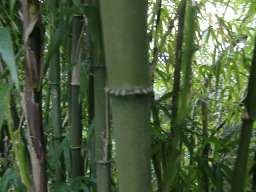 hings of beauty and value have their price. And in the end, it is almost always worth it, iddn’t it? At least I feel so as I listen to the stream and autumn wind blowing through the bamboo, as I sip a small glass of sake, and nurse the bamboo-cuts on my arm. hings of beauty and value have their price. And in the end, it is almost always worth it, iddn’t it? At least I feel so as I listen to the stream and autumn wind blowing through the bamboo, as I sip a small glass of sake, and nurse the bamboo-cuts on my arm.
Enjoy the newsletter,
Warm regards,
John
 
|

"I'm From the Government; I'm Here to Help."
And help they did...
How many times have we heard that line, the title above, amidst
snickers in a joke? Well, it has in fact been known to happen. The NRIB is a case in point.
The National Research Institute of Brewing, or Shurui Sougou Kenkyujo, was formed in 1904, and since then has gone through several changes in name and in administration. While over the years different ministries have been in charge, it was more or less privatized in 2001.
Back when the organization was formed, sake brewing was pretty much based on traditional methods and empirical data, rather than science. Brewers did what worked, and kept their methods pretty much secret, or at least within their guild, as it was the source of their livelihood. This of course left a lot of less well-connected breweries in the dark, and much sake suffered because of it. Since alcohol tax was a significant source of revenue for the government, it behooved them to invest a bit in seeing to it that the overall level of technical skill and awareness improved. Hence the forming of the research organization.
You can learn a bit more about the organization here.
So…what could these guys do that sake brewers could not? Experiment, for one. A sake brewery cannot afford to mess up a tank, much less several from screwing around to see what works better. A proper research organization can experiment, take lots of data, experiment again, and generate measurable, repeatable and independently verifiable results that can then be taught to others.
Examples might include temperature inside a fermenting moromi (mash).
How does it vary, based on what factors, and what is important in controlling it? Or the relationship between temperature and enzymes created when growing koji mold. Or which yeast strains worked better under given conditions. Or the effect of moisture content on flavor, and how to control that. And these are but a few that flew off my fingertips just now.
Also, it is important to bear in mind that in the 60s and 70s, ginjo sake began to get popular. Now this stuff is a different animal from less expensive sake dosed with lots of distilled alcohol. Higher milling means everything changes, and there were very literally brewers that simply could not make the change. You’d think it would be the same stuff, with just minor adjustments. Perish the thought! So many of these brewing “sensei” helped countless brewers adapt to new methods. There are, in fact, rumors of now-famous toji and even now-famous regions or groups of breweries that achieved their current status after benefiting from the guidance and instruction of one of these government types.
In truth, any single step of the process stood - and stands - to be improved by a bit of proper research. Sure, experienced toji (master brewers) can be incredibly skilled, intuitive, and able to make consistently great sake. But everyone hits a wall or problem somewhere, and also not all brewers had such great skill.
So the research folks would research, then go around and taste and
teach. It must have been an incredibly fun job, methinks. Another great job is one that was held by Mr. Jiro Shinoda, a truly iconic figure in the sake world. This crafty guy, still active and incredibly light-hearted (must be the great sake), is a for-the-most-part retired architect that finagled himself into being a designer of sake breweries. Now that would just rock. He also started and ran a handful of tasting groups that helped make ginjo popular.
In one of his recent newsletters, he told the story of a couple of the more famous “sensei.” Once, one of them and he were visiting a brewery together when a nearby brewery owner stopped by, saying that while he realized they were there on other business, could he stop by to check on a particularly troubling process. The observant architect saw the old toji of the second brewery, in tow behind the inquiring owner, look at the sensei askance, young in appearance as he was, as if to imply, “how can this young whippersnapper help me, a journeyman brewmaster of many decades?”
Yet when they returned a couple of hours later, he saw that same toji face the sensei and bow deeply and deferentially. Mission accomplished; case won.
Yet I have heard one of these famous guys speak of the downside of
all this. “We learned what we perceived to be the best general way to do things, then taught that to everyone around the country,” he explained. “As such, we may have adversely affected the individual character of the regions, kind of homogenizing ginjo, to some degree.” Indeed, I always say there is much more regional character to be found in the lower grades of sake, so perhaps there is a semblance of truth to this.
Regardless, today things are very different. While the NRIB still does wonderful research, and runs educational programs for the industry as well, and is furthermore in charge of the National New Sake Appraisal contest held each spring, today much more information is available to the industry.
While I would not go so far as to say that these days, almost anyone can brew, there are now reams of accessible data, publications, and telephones and email that allow its rapid dissemination. Brewers have much more support available to them in these modern times.
Nevertheless, when they come and say, “I’m here from the government; I’m here to help,” they can honestly be believed.
|
 The Fifth "18 Samurai" Sake Tasting The Fifth "18 Samurai" Sake Tasting
On the morning of October 31, I attended a sake tasting in
Tokyo put on by a group of young, small brewers that call themselves "The Next Generation of Brewers: The 18 Samurai of Nihonshu." I have attended in past years as well, and was reminded how much I enjoy this kind of tasting.
Why? Because I can rarely taste this kind of stuff. Very small brewers not in the mainstream of distribution, more often than not revived by young blood in the ranks. In other words, the owners-inherit have made decisions to revive their sake and its reputations. Often, they have created new meigara (brand names) in an effort to recreate themselves.
Sure, there was a rough spot here and there. And quirkiness to spare. But all in all the sake was wonderful. And it was a massively popular event: last year they had two sessions but since both were overly crowded they made it three this year. I was at the first, but so was half the rest of the population of Tokyo, it seemed. Many of us surmised that everyone wanted to avoid the crowds by going to the least-likely-to-get-crowded morning session. Our strategy may have backfired. But I digress.
What was there? Sharaku from Fukushima in its resurrected form at a new brewery was the winner for me. But Mutsu Hassen (Aomori), wonderful if tiny Sagami Nada (Kanagawa!), and Yamawa (Miyagi). Both Shichihonyari (Shiga) and Saku no Hana (Nagano) were solid, full and hard to find fault with, but I have come to expect that from these two.
If there is any caution or caveat involved here, it is that brewers of this small scale may have challenges maintaining consistency from year to year. It is just easier to maintain homogeneity when you have less product to work with. But then again, that is part of the fun.
|
 Sake Basics Sake Basics
Sandan-Shikomi
Sake is made using rice, koji (rice with enzyme-creating mold grown
upon it), and water. While other beverages around the world are also made using rice and even koji, sake is unique in many aspects. One is Sandan-shikomi, or “Three Stage Brewing.”
As the fermenting mixture bubbles away, enzymes turn the starch in the rice to sugar, and then yeast turns the sugar to alcohol. Too much sugar chokes the yeast, too little starves it. In order to optimize the process a delicate balance is required. That is why the rice, water and koji are divided up and added to the mash in three separate stages - to maintain a good balance of all the right stuff. And this three-stage-right-stuff-balancing technique called sandan-shikomi is only used in making sake, no other alcoholic beverage in the world employs it.
|
 Did You Know? Did You Know?
Hatsu-shibori and Shinshu
At most kura (breweries) around Japan, the first batch of the year will
be ready soon. The brewmaster arrives about the beginning of October, they clean for a week or so, start the first yeast starter which take two weeks, start the first batch which takes three more weeks, and later this month (November) many places will have created the first batch of sake of the season. Known as “hatsu-shibori” (“first pressing”), it will have been the batch in which the brewmaster felt out this year’s rice, climate, tools and situation. Based on that, (s)he will adjust things to make the most of this season’s idiosyncrasies.
Just-brewed sake is known as shinshu, although that can refer to the first batches of the year as well as just-pressed stuff later in the season. While hard to find outside of Japan, naturally, it is fun and brash and bristling with youth.
|
 Announcements and Events Announcements and Events
Sake Professional Course 2011, Japan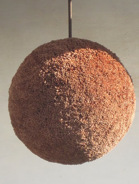
January 24-28, 2011
It is my pleasure to announce the 8th annual Sake Professional Course to be held in Japan. This is it, folks: the most important thing I do all year, and far and away the best possible sake education in existence. Three days of lecture and tasting, each evening capped off with dinner and fine sake, then two days spent visiting four sake breweries of different size and scale - punctuated again with fine sake and a great meal each evening. Of course, certification testing for a Certified Sake Professional is a part of the event.
Word travels fast, and most of the 20 spots have already been reserved. If you are interested, please send an email to me at info@sake-world.com right away. Feel free to ask any and all questions or make any inquiries about the course as well. To learn more about the schedule and details, check this out.
Trust me when I say - for sake education - it does not get any better than this. Alternatively you can see what others have said.
Sake Tours!
Please join us for a very special journey through the regional
brewing and culinary traditions of Japan. Tour destinations are filled with moments you cannot experience otherwise. In 2011, we will return to San-in, the land of myth. And, we are adding a tour of the northern snow country of Akita for special breweries and onsen.
Meet and speak directly with artisans to appreciate their history, philosophy, and the art of brewing. Learn from the world's best sake educator, John Gaunter, and share the passion of brewers for their craft. Then, wind down at an onsen to relax, and simply have fun! Learn more at http://saketours.com .
|
 Sake Education Central Sake Education CentralWant to learn all the basic sake facts quickly? Just what you need to enjoy it immediately? Need neither too much nor too little information? Grab The Sake Notebook. Download it at 4pm an d you will be ready to enjoy sake at dinner. Guaranteed!
The Sake Production Slideshow allows you to sit back, relax and watch a beautiful, condensed powerpoint presentation of how sake is produced.
Japanese for Sake Lovers not only teaches sake pron unciation, it includes a native speaker pronouncing the words with a time lapse for your practice. You not only learn how to speak “sake”, you learn proper Japanese pronunciation without the cost of a Japanese language course!
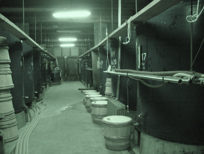 Do you w ant to know the “behind the scenes” secrets of the master brewers? Read the untold stories of sake brewers in Sake’s Hidden Stories. Each of the dozen-odd stories introduces a brewer, the sake, and tons of subtle, hidden insights and sake information you'll not find in any other book about sake. Guaranteed.
Going to Japan or a Japanese restaurant? Perhaps you’re in the mood for sushi and sake at home. Do you know what to look for and how to ask for it? You will when you tote around more than 200 terms in your pdf or iPhone with The Sake Dictionary.
Product Highlight: Japanese For Sake Lovers A Guide to Proper Pronunciation Here it is: something that ensures you will enjoy your sake experience more and more - a short, concise instructional guide on how to properly and naturally pronounce the Japanese language, sake brand names, and all the terminology that is a part of the sake world. With the help of this little course, you will sound like a native when talking about sake.
No more butchering sake names in Japanese! Learn how to properly pronounce the sake you love!
Japanese for Sake Lovers consists of a short text and three audio files. It all begins with a guide to the theory of pronouncing Japanese, which you will soon realize is surprisingly simple. Following that, you will have the opportunity to practice pronunciation of all the important terminology surrounding sake, and dozens of brand names that cement in your mind the principles, fundamentals, and idiosyncrasies of pronouncing Japanese.
This is not a language text. You will not learn grammar or much 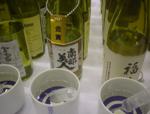 vocabulary outside of sake-specific terms; although, it does include a handful of phrases to help you navigate your way to sake bliss in Japanese when at a sake pub. It is augmented by three audio files that allow you to practice, repeating the words and phrases after a native speaker.
Go here now to order your copy for $14.99, and feel one step closer to the beverage you love – guaranteed.
*Satisfaction
Guaranteed*
Should any of the above products not be to your immense satisfaction, your money will be cheerfully refunded, no
questions asked.
|
Stay Subscribed!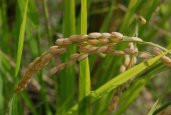
Are you not getting this newsletter? I realize that is like asking that "those not present please raise your hand," but for future reference, should you spontaneously stop receiving this newsletter, please go here and sign up again. Should that not work, please go to www.sake-world.com.
Email newsletter services are very careful not to be considered spam enablers, but the problem is that often very valid email addresses come back bounced as invalid. It is an unavoidable problem. So if you or someone you know is not getting this, or stop(s) receiving it inexplicably, please do take a moment to double check that you are still subscribed.
Sincere apologies for the hassle, mixed with gratitude for reading this newsletter.
|
I hope you have found the above information helpful and entertaining. For more information about all things sake, please check out www.sake-world.com. Until next month, warm regards, and enjoy your sake. 
Questions and comments should be directed to John Gauntner, at this email address.
All material Copyright, John Gauntner & Sake World Inc.
Regards,
John Gauntner
Sake World, Inc
 . . 
|
|
